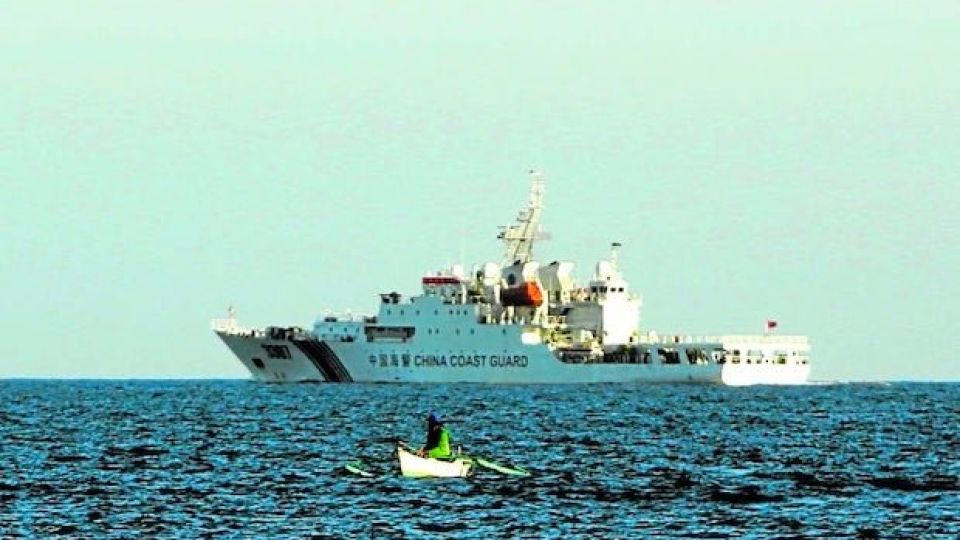June 21, 2023
MANILA — Manila and Beijing were “making some progress” toward a breakthrough in resolving their dispute over China’s annual fishing ban in the South China Sea that had been the bane of Filipino fisherfolk for over two decades, President Ferdinand Marcos Jr. told reporters in Quezon City on Tuesday.
The president said the two sides had reached the point of having “coordination” on fishing activities despite China’s unilateral imposition of a fishing ban in the resource-rich waterway.
“We already have coordination with them (China) when there is a fishing ban so there won’t be a sudden fishing ban. At least we can have a plan,” Marcos said.
“We are making some progress in that regard,” he added.
Since 1999, Beijing has imposed a yearly fishing ban in the vast South China Sea, including the West Philippine Sea, or the parts within the country’s 370-kilometer exclusive economic zone (EEZ), despite a 2016 arbitral ruling recognizing the Philippines’ sovereign right to fish and explore for resources in those waters.
Other income source
“When they say there will be a fishing ban in two months’ time, we can make a plan,” Marcos said.
“What will our fishermen do? So let’s give them another livelihood or another source of income.”
In May, the president said Beijing had agreed to discuss the fishing rights of Filipino fisherfolk in the South China Sea, as many of them often experience harassment from Chinese vessels even in their traditional fishing grounds.
“These things do not come very quickly… but we are slowly making progress because the key to that is the improved communication between the Philippine government and the Chinese government,” the president said.
Marcos had ordered the Philippine Coast Guard and the Department of Foreign Affairs (DFA) to create a map of the Philippines’ fishing grounds in the West Philippine Sea, which he planned to present to China.
In 2016, the Permanent Court of Arbitration in The Hague, Netherlands, ruled in favor of the Philippines by invalidating China’s sweeping claims in the South China Sea and recognizing the right of Filipinos to fish in those waters.
Beijing has refused to acknowledge that decision.
On June 16, a Chinese navy ship reportedly shadowed the Philippine civilian patrol vessel BRP Francisco Dagohoy as it was heading back to Palawan from the Philippine-occupied Pag-asa Island.
Asked to comment on the incident, Marcos suggested that Beijing was actually becoming less hostile.
‘A little progress’
“The latest report is that they were just tailed, unlike before [when] they were being blocked. So there’s a little progress there,” he said. “That is because we are continuing to talk to the Chinese government, President Xi (Jinping), in every way.”
Marcos said he had pressed the matter during his bilateral meeting with Xi in Beijing in January.
“Let’s not talk about the territory because we can’t decide [on] it now that we are talking. Let’s prioritize the fisheries, because I say, the people are innocent, why should we punish them,” he recalled telling China’s leader.
China says the fishing ban, which lasts from May to August, is intended to promote sustainable fishing and improve marine ecology. The Philippines has repeatedly protested the imposition.
The May 1 to Aug. 16 fishing ban covers waters north of the 12th parallel and two of the 12 fishing management areas of the Philippines — designated as Zones 5 and 6 by the Bureau of Fisheries and Aquatic Resources (BFAR).
These zones include waters surrounding the provinces of Antique, Occidental Mindoro, Palawan, Ilocos Norte, Ilocos Sur, Pangasinan, Zambales, Bataan, Pampanga, Bulacan, Cavite, and Batangas.
The ban roughly covers waters west of Palawan’s Busuanga Island all the way north past Panatag (Scarborough) Shoal, also called Bajo de Masinloc off Zambales.
In 2019, Malacañang said the China-imposed fishing moratorium was against the sovereignty of the Philippines.
In May 2021, the DFA filed a diplomatic protest against China’s fishing ban in the South China Sea, saying the prohibition encroached into parts of the country’s EEZ and put Filipino fishers at risk of attack.
Bigger fish haul
A year later, the DFA filed a new diplomatic protest against the ban, which it said covered areas in the West Philippine Sea over which the Philippines enjoyed “sovereignty, sovereign rights, and jurisdiction.”
But China rejected the Philippines’ diplomatic protests. At a press conference in Beijing on June 1, 2022, a Chinese foreign ministry spokesperson said China could not accept the DFA’s “unwarranted accusation.”
On Tuesday, Marcos said the improving ties with China had already led to a BFAR projection of a bigger haul for Filipino fishers.
BFAR spokesperson Nazario Briguera said on Saturday that the West Philippine Sea had contributed 6 percent to the country’s total fisheries production, as of 2022.
Data from BFAR showed there were 376,733 fishers in the West Philippine Sea as of January this year.


